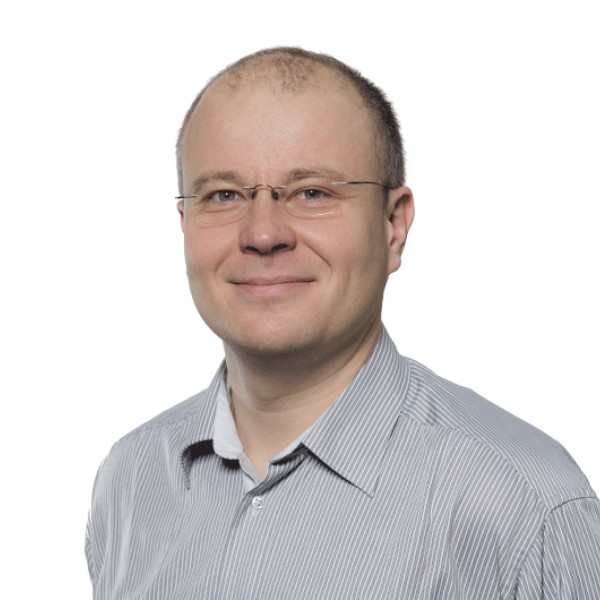Our research focuses on the chemistry, physics, and material science of functional inorganic nanomaterials. Leveraging our expertise in synthesis, self-assembly, and physical chemistry, we aim to develop novel materials for applications in optoelectronics, energy storage, and catalysis.
Our research is centered around the chemistry, physics, and material science of inorganic nanostructures. Leveraging our expertise in synthesis, self-assembly, and physical chemistry, our team strives to develop novel materials for applications in optoelectronics, energy storage, and catalysis.
We work with chemical systems that defy easy classification as crystalline or molecular, organic or inorganic. For example, we are advancing the methodology for colloidal synthesis of functional inorganic nanostructures, which has evolved into a distinct branch of synthetic chemistry. Originally focused on the preparation of simple spherical nanoparticles, this field has evolved towards increasingly intricate structures, providing precise control over the composition, size, shape, and connectivity of various components within a multicomponent structure. Two-dimensional transition metal carbides and nitrides (MXenes) represent another unique playground for chemists and materials engineers. MXenes integrate solid-state, surface, and molecular chemistry to enable material properties that are challenging to achieve within individual chemistry subfields.
Inspired by the way most solids form in nature, with individual atoms or molecules self-assembling into rigid, highly uniform arrays, we investigate the assembly of nanocrystals and MXenes into ordered superstructures. Assembling nanoscale functional building blocks offers a powerful modular approach to designing novel materials and 'metamaterials' with programmable physical and chemical properties.
Nanocrystal superlattices constitute a novel category of condensed matter, drawing properties from both the individual nanocrystals and the collective phenomena arising from interactions among the superlattice building blocks. Our research explores the fundamental aspects of self-assembly phenomena, as well as the electronic and optical properties of these structures. The knowledge gained from our fundamental studies on nanocrystals and MXenes contributes to the development of practical solution-processed optoelectronic devices and new methods for additive device integration, such as direct optical lithography of functional inorganic nanomaterials (aka DOLFIN).
Belarusian State University, Minsk, Belarus
Diploma
1996
University of Hamburg, Germany
Dr rer. nat.
2002
IBM T. J. Watson Research Center, Yorktown Heights, NY
Postdoctoral Fellow
2005
The Molecular Foundry, Lawrence Berkeley National Laboratory, Berkeley
Staff Scientist
2007
University of Chicago
Assistant Professor
2011
University of Chicago
Associate Professor
2013
University of Chicago
Professor
Present-
University of Chicago
Louis Block Distinguished Service Professor
2021
University of Chicago
Ernest DeWitt Burton Distinguished Service Professor
Present-
C. Zhou, D. Wang, F. Lagunas, B. Atterberry, M. Lei, H. Hu, Z. Zhou, A. S. Filatov, D.-e. Jiang, A. J. Rossini, R. F. Klie, D. V. Talapin. Hybrid organic-inorganic two-dimensional metal carbide MXenes with amido- and imido-terminated surfaces. Nature Chemistry (2023). https://doi.org/10.1038/s41557-023-01288-w
D. Wang, C. Zhou, A. S. Filatov, W. Cho, F. Lagunas, M. Wang, S. Vaikuntanathan, C. Liu, R. F. Klie, D. V. Talapin. Direct synthesis and chemical vapor deposition of 2D (2023). 1247-, 1242379, Sciencecarbide and nitride MXenes.
I. Coropceanu, E. M. Janke, J. Portner, D. Haubold, T. D. Nguyen, A. Das, C. Tanner, J. K. Utterback, S. Teitelbaum, M. Hudson, N. Sarma, A. M. Hinkle, C. Tassone, A. Eychmüller, D. Limmer, M. Olvera de la Cruz, N. Ginsberg, D. V. Talapin. Self-assembly of nanocrystals into strongly electronically coupled all-inorganic supercrystals. Science 375, 1422-1426 (2022).
V. Kamysbayev, A. S. Filatov, H. Hu, X. Rui, F. Lagunas, Di Wang, R. F. Klie, D. V. Talapin. Covalent surface modifications and superconductivity of two-dimensional metal carbide MXenes. Science 369, 979-983 (2020).
Y. Wang, I. Fedin, H. Zhang, and D. V. Talapin. Direct Optical Lithography of Functional Inorganic Nanomaterials. Science 357, 385–388 (2017).
H. Zhang, K. Dasbiswas, N. B. Ludwig, G. Han, B. Lee, S. Vaikuntanathan, D. V. Talapin. Stable colloids in molten inorganic salts. Nature 542, 328–331 (2017).
C. R. Kagan, E. Lifshitz, E. H. Sargent, D. V. Talapin. Building Devices from Colloidal Quantum Dots. Science 353, 885 (2016).
M. Boles, M. Engel, D. Talapin. Self-assembly of colloidal nanocrystals: from intricate structures to functional materials. Chem. Rev. 2016 116, 11220 (2016).
M. A. Boles, D. Ling, T. Hyeon, D. V. Talapin. The surface science of nanocrystals. Nature Mater. 15, 141 (2016).
D. S. Dolzhnikov, H. Zhang, J. Jang, J. S. Son, M. G. Panthani, S. Chattopadhyay, T. Shibata, D. V. Talapin. Composition-matched molecular “solders” for semiconductors. Science 347, 425 (2015).
Fellow of Materials Research Society
2024
Fellow of the Royal Society of Chemistry
2014
ACS Inorganic Nanoscience Award
2018
Blavatnik National Award for Young Scientists Finalist
2017
Fellow of the Institute of Molecular Engineering
2015
American Chemical Society Akron Award
2014
Ranked #21 among top 100 most cited chemists of the past decade by Thompson Reuters
2011
Materials Research Society Outstanding Young Investigator Award
2011
Camille Dreyfus Teacher-Scholar Award
2010
The David and Lucile Packard Fellowship
2009
Sloan Fellowship
2009
NSF CAREER Award
2008
LMUexcellent Fellowship, Germany
2007
IBM Invention Achievement Award
2004
Diploma with Honors, Belarusian State University
1996
National Academy of Science Student Award
1995
ISF (International Soros Foundation) Fellowship
1994
1st Prize of the USSR Chemistry Olympiad
1991
Dmitri Talapin Selected as a 2024 Materials Research Society Fellow
NanoPattern Technologies, co-owned by Prof Dmitri Talapin, secures $1.5 million for Quantum Dot Ink
